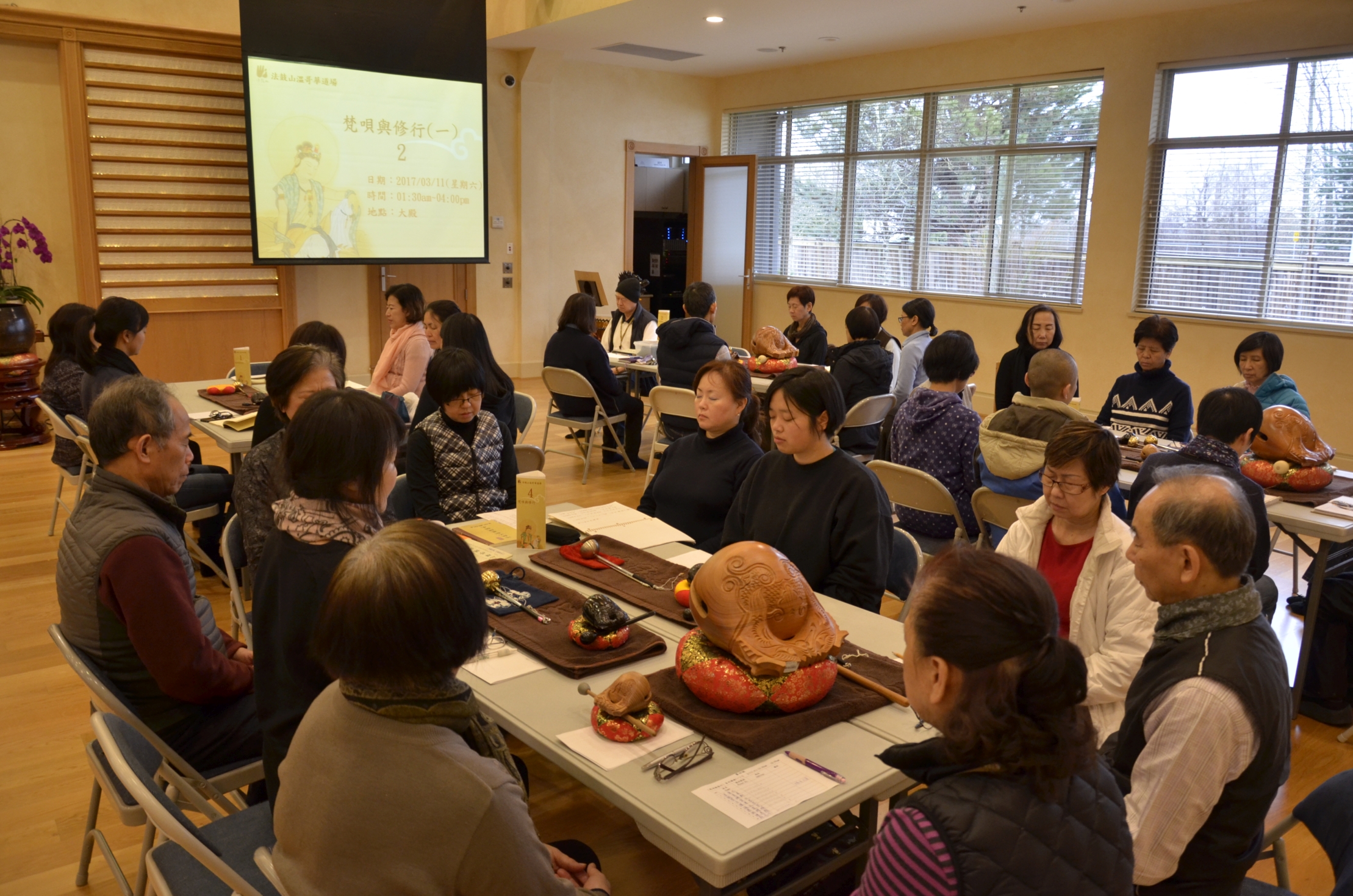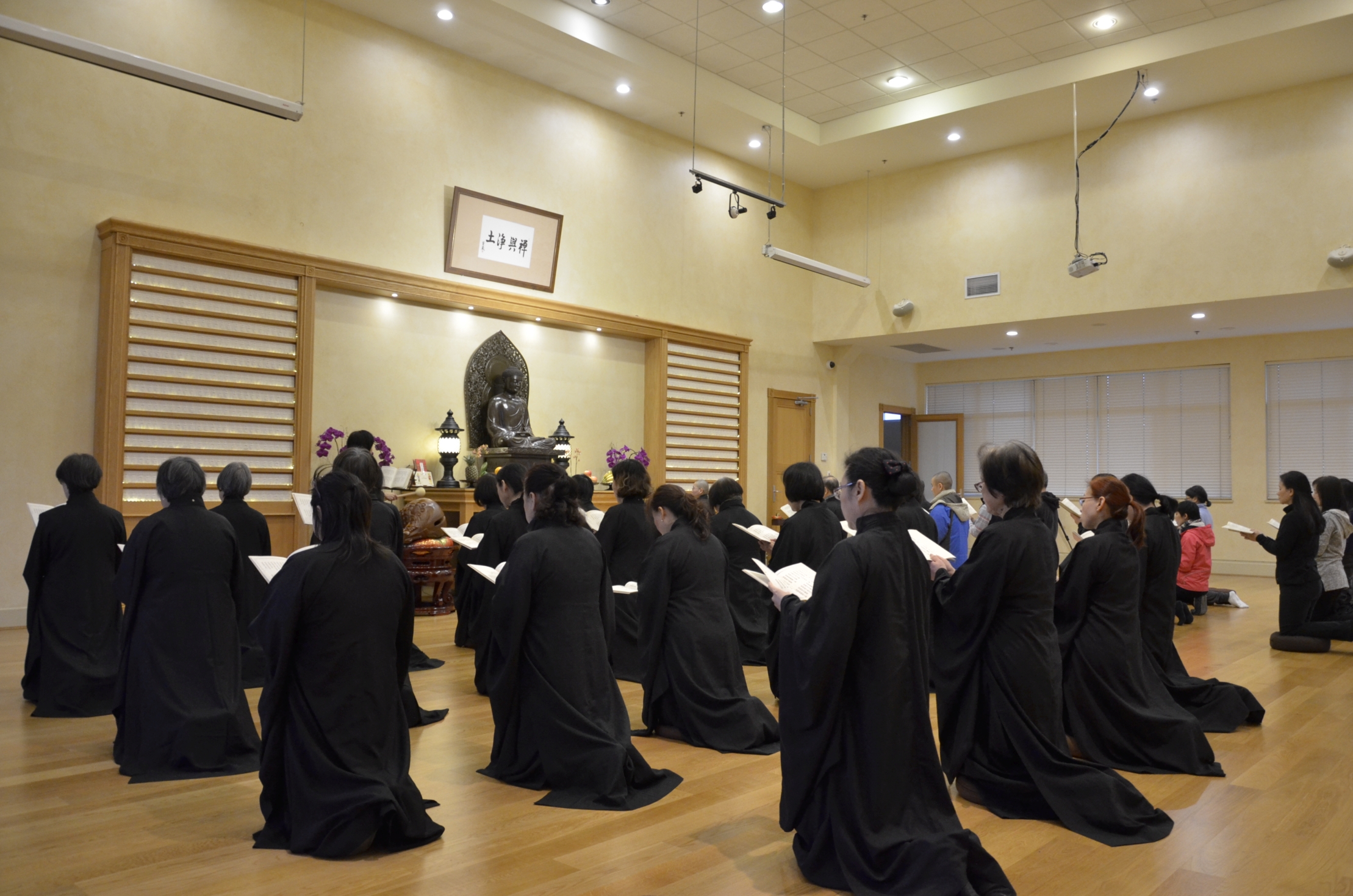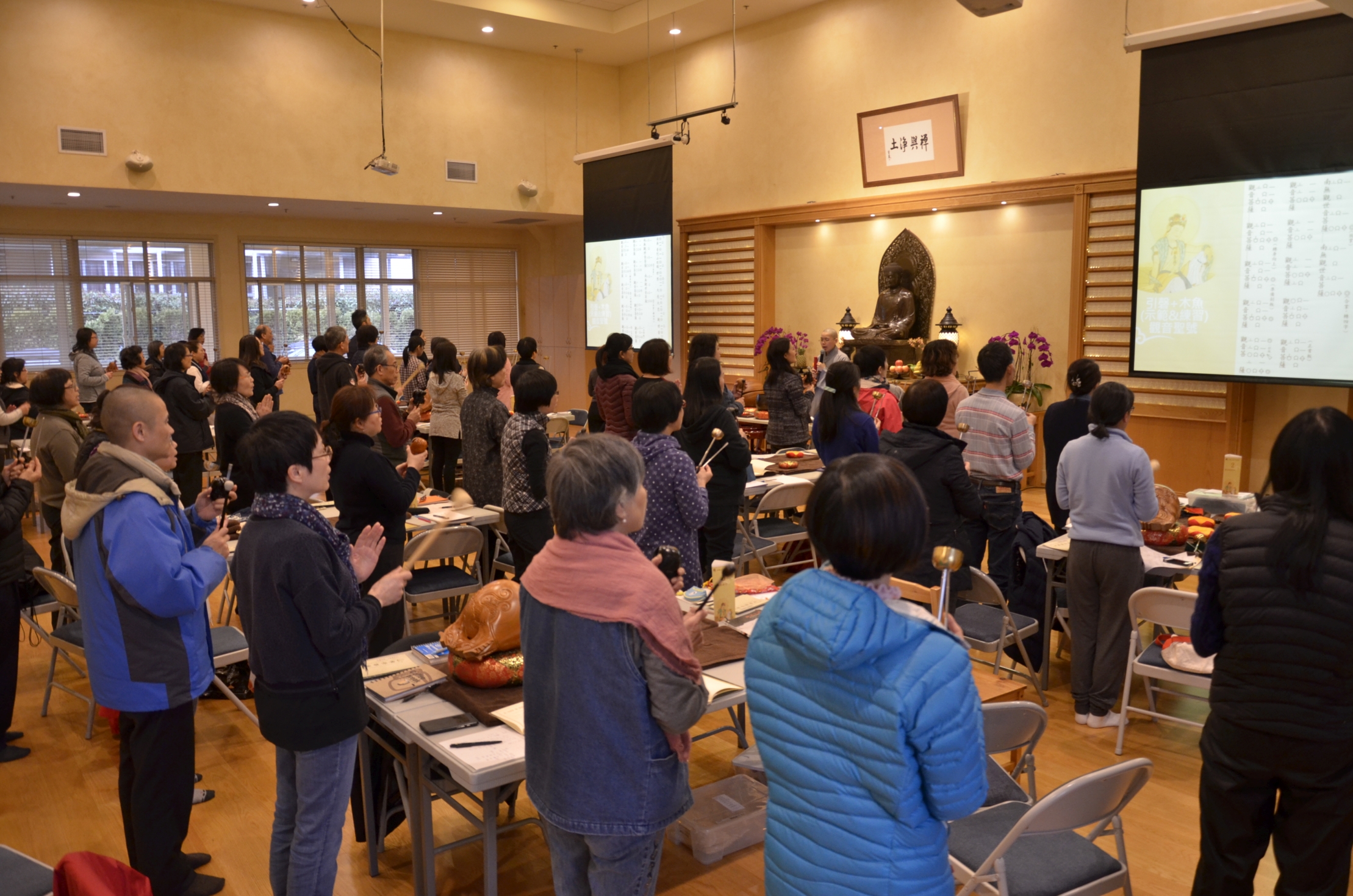The Dharma Door of Buddhist Chanting of Prayers and Praises.
The Dharma Door of Buddhist Chanting of Prayers and Praises.

When Dharma Drum Vancouver Center announced classes on chanting of Buddhist prayers and praises, I was thrilled. The opportunity to learn more about the unique Dharma instruments was intriguing and, more importantly, I wanted to learn how the chanting could enhance my practice

In the older days, there were no clocks; instead, monasteries used a series of notes played on Dharma instruments to synchronize their daily activities. From waking up, to lunchtime, work practice, dinnertime, and then bedtime, each event was signified by a unique sound, which cued everyone to what was happening. This tradition continues today. During meditation retreats, we observe noble silence; there are clocks nowadays, but the activities are still run by sounds from various instruments. This simplifies our lives, so we can focus on looking inward to watch our thoughts, without being concerned about the time of day.
Venerable Chang Wei gave us a brief introduction to various Buddhist Dharma instruments and taught us how to chant and play the hand chime and the wooden fish. Rather than traditional musical notation, each instrument is represented by a special visual symbol; for example, a solid circle symbolizes the hand chime, and each note is counted with 4 beats. We practiced counting the beats by taping and moving our fingers. It was a joy to practice chanting Namo Guan Shi Yin Pusa, the Four Great Vows, and the Universal Worthy Bodhisattva's Ten Great Vows. We managed to chant, sing, play the instruments, and count beats simultaneously.

Additionally, Fa Shi taught us the etiquette to observe in the Buddha hall, and demonstrated the correct way to prostrate while listening to each sound so we do each action harmoniously.
We learned that Buddhist ceremonies and meditation practices are not necessarily mutually exclusive activities. Meditation techniques can be integrated into ceremonies to attain a more tranquil and peaceful body and mind. The key is to relax; when we are relaxed, we can sing better, we sing from our abdomen, and our whole body can be used as an instrument to create beautiful sounds. Our self-centeredness is reduced not only because we are singing and chanting in unison with everyone else, but also because we are chanting for the benefit of all beings. If we make mistakes, we just let them go, not letting negative emotions affect ourselves or others. Just focussing on the present moment and the practice of chanting helps to still our mind. Together with correct posture, chanting can also stimulate the flow of energy and blood throughout our body, thus improving our physical health. When the whole assembly of people is in harmony, we produce a clear and pleasant sound. This wonderful sound may inspire us to study and understand the profound principles and philosophies behind the liturgy that we are chanting. Ultimately, we have to practice accordingly and walk the path on our own in order to liberate others and eventually ourselves.
We just completed the last of the two-part series on March 11, 2017. Fa Shi even arranged an evening service so we could put our new knowledge into practice. It was a wonderful course, I learned a lot and enjoyed every moment of it.

I wish to thank Venerable Chang Wei for teaching us. Fa Shi, you held nothing back and taught us as much as possible. Is teaching your passion? Thanks to Venerable Chang Wu for teaching us how to relax. And thanks to all Fa Shi and volunteers for making this course such a fruitful event.
By Yoke Teng